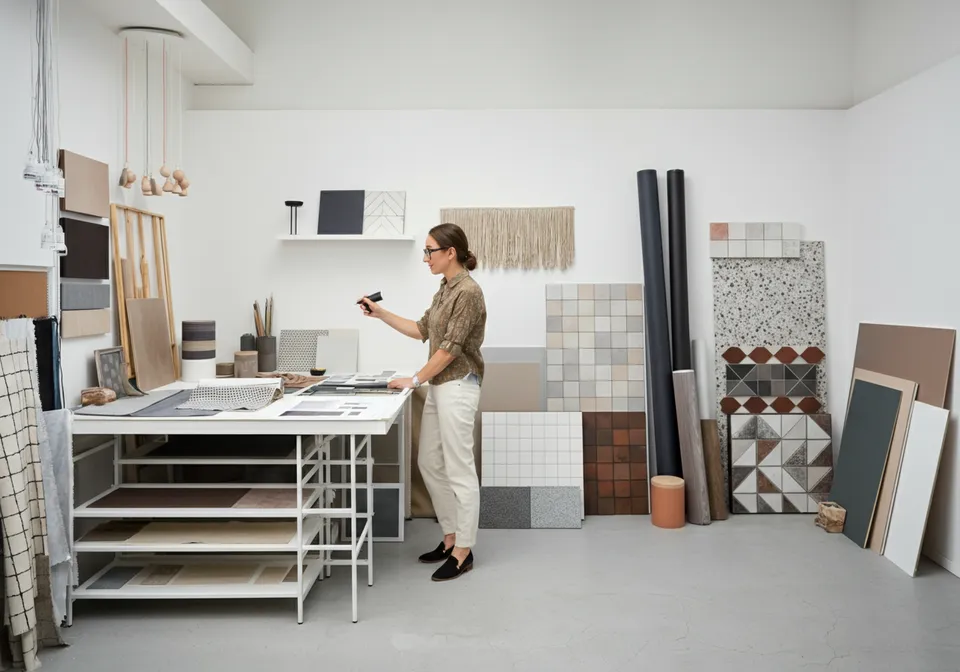
As an interior designer, creativity and organization are essential. However, catalog and email overload in interior design can disrupt even the most efficient workflows.
One community member recently raised this common frustration:
“How does everyone deal with the total inundation of spam, promotional emails, unwanted catalogs, etc.? It sometimes feels like a full day is spent clearing it all out and unsubscribing. In some respects, I want the emails so I can keep certain companies at the top of mind, but the constant communications are overwhelming and distracting.”
This struggle resonates with many designers. The flood of emails and catalogs is more than just a nuisance—it’s a time drain, an environmental concern, and a source of mental clutter. Let’s explore practical solutions for managing catalog and email overload in interior design while maintaining focus and sustainability.
Why Catalog and Email Overload Happens
Catalog and email overload in interior design has several causes:
- Aggressive Marketing Tactics: Vendors send frequent emails and catalogs to remain top-of-mind, often at the expense of a designer’s sanity.
- Data Sharing: Signing up for a single mailing list can inadvertently lead to being added to others.
- Physical Samples as the Default: Some brands assume designers prefer physical catalogs and samples without asking for preferences.
- Overwhelming Schedules: Few designers have the time to unsubscribe, declutter, or refuse unnecessary materials.
Practical Strategies for Managing Catalog and Email Overload
If you’re drowning in emails and catalogs, try these strategies to reduce the clutter and regain control of your workflow:
1. Organize Your Inbox
Emails can quickly pile up, contributing to catalog and email overload in interior design. Consider these tips:
- Create a Separate Inbox: Use a dedicated email address for marketing messages, freeing up your main inbox for client and project communication.
- Set Up Filters: Automatically direct promotional emails into a separate folder to minimize distractions.
- Unsubscribe Monthly: Spend a few minutes each month unsubscribing from lists you no longer engage with. Tools like Unroll.Me can streamline this process.
2. Go Digital Whenever Possible
Many brands now offer digital catalogs that are more sustainable and easier to manage. Requesting PDFs or using vendor platforms like MyDoma, Studio, or Ivy can significantly reduce physical clutter while keeping your resources current.
Digital catalogs are searchable, always updated, and take up zero physical space—making them an ideal solution for managing catalog and email overload in interior design.
3. Communicate Preferences to Vendors
Most vendors are happy to adjust their practices when asked. A quick call or email can remove you from unnecessary mailing lists or limit the delivery of physical catalogs. Here’s what to request:
- Switch to digital-only communications.
- Reduce sample shipments to project-specific needs.
- Limit catalogs to one copy per location (e.g., office or home—not both).
4. Recycle or Donate Thoughtfully
For catalogs and samples you no longer need, recycling is an obvious choice. However, consider donating them to art programs, senior centers, or schools where they can be repurposed creatively.
Some designers also return unused samples to vendors, encouraging them to reuse materials instead of discarding them.
5. Set a Decluttering Routine
Regularly sorting through catalogs and emails prevents them from becoming overwhelming. Whether you declutter weekly, monthly, or quarterly, consistency ensures you stay on top of the problem.
Insights from the Community
Here are some top insights from designers in the community tackling catalog and email overload in interior design:
- @idgreenlist: “I do not keep catalogs or many samples. This conversation just came up in our membership chat. From a sustainability perspective, if you don’t use the catalog, give it back to your rep, recycle it, or donate to a design school or senior center where they can use them to make art.The catalogs I use most and keep:
- Schluter – easier to navigate than the website. And the 3D drawings help me understand which piece to spec.Rev-A-Shelf – clients can better understand using this tool at an in-person meeting, and the website is tricky.
- @margonathansoninteriors: “I used to get two fat catalogs at a time from a company with initials RH. They’d come to the same address, same name, and it drove me nuts. I tried to stop them, but it continued until I moved. It’s wasteful considering how much production and resources go into it. The only thing concerning is that it’s several people’s jobs to help produce them.”
- @gary.savill.3: “I have a QR Code for my catalog. That way, I can update it and keep clients informed without big printing expenses. I only print minimal amounts for showroom collaborations or clients who explicitly ask for one.”
These comments emphasize the importance of sustainability, communication, and proactive decluttering in managing catalog and email overload in interior design.
Moving Toward a Sustainable Design Practice
Tackling catalog and email overload in interior design isn’t just about personal convenience—it’s also about fostering a more sustainable and efficient industry. By encouraging vendors to prioritize digital solutions, limiting unnecessary communications, and decluttering regularly, designers can lead by example.
Final Thoughts
Catalog and email overload in interior design is a challenge for many professionals, but it doesn’t have to be overwhelming. With the right systems and communication in place, you can declutter, streamline your workflow, and focus on what truly matters: designing incredible spaces.
What’s your strategy for managing catalog and email overload in interior design? Share your tips in the comments—I’d love to hear them!

